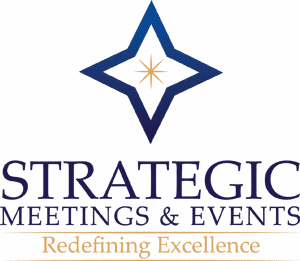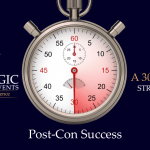Strategic Event Budgets – History is the Key to the Future
By Christy Lamagna, CMP, CMM, CTSM

• Budgeting benefits
• Details in the data
• Rewards and dividends
With the past being the key to the future in mind, let’s quickly review the steps to strategic success that have been covered in this column since its inception.
1. Define your goal.
2. Host a discovery session.
3. Select destinations/venues for consideration.
4. Conduct site visits to your top choices.
5. Negotiate contracts with venues and vendors of choice.
Once a contract is final, it is time to tighten up or create your budget. Part of an event strategist’s role is understanding events are investments in an organization, not expenditures. That means all spend is directed towards achieving the event’s goal.
The first time you plan a budget this way, you may find yourself shifting dollars from one line-item to another. That’s a great sign. For instance, if the event’s goal is networking, you may shift money from décor and put it towards geo-caching or an activity that creates conversation and drives interaction. The reason this is a good thing is dollars which were once allocated to secondary needs are put to better use. (If your client/organization does not allow monies to shift between categories, this is a perfect opportunity to discuss the benefits to strategic planning versus event planning and why that policy needs to change.)
The process is the same whether you are creating a budget for an event that is multiple years out or two months from now. This is particularly true if you have your contracts in place because your variable costs (housing and food, as well as whatever else you may have contracted) are locked in.
Strategic Tip: Negotiate either a cap on the percentage food costs can increase per year, or lock in the rates at the time of your signing so there are no surprises when you plan your menus.
If you estimate a 5% increase in airfare for each year out you are planning, that should give you room to spare (unforeseen circumstances like a fuel shortage notwithstanding). If you allow for an overall increase of 5-8% a year for all other expenses for first-tier cities and 2-5% for second-tier and beyond, you are off to a great start. If planning an international event multiple years out, you may want to aim high as the exchange rate is so unpredictable. If you are uncomfortable putting in a figure, ask your Chief Financial Officer to provide one.
One of the best tools a strategist has in their arsenal when budgeting is historical data. If you aren’t taking copious notes while onsite, you need to start as soon as possible. Here are 10 things to track:
1. How many attendees showed up for each meal and break?
2. How many gallons of coffee/decaf/hot water was consumed during each meal/break?
3. What percentage of your group canceled?
4. Is your group a heavy drinking crowd? If so, what was consumed? (Be specific as to type and brand of alcohol, so not just ‘wine’ but merlot, or Heineken® versus ‘beer’.)
5. Food allergies and special requests.
6. How many people were in each session (general session at the start, after the am break, etc.)?
7. What breakouts were best attended and who led them?
8. What dine-around or excursions were best attended?
9. Where are your travel hubs? Do attendees fly out of multiple cities with clusters of people at a specific airport and just a handful leaving from others? Do you use one main airport? Scattered travelers over multiple airports?
10. Is this a late-night audience or an ‘early to bed, early to rise’ group?
The more you know the better. If your group doesn’t eat much in the morning, drop your guarantees, put out a continental breakfast and boost your morning break with breakfast sandwiches or whatever your audience prefers. Knowing how much coffee was consumed can add up to hundreds of dollars saved by not over ordering. The same goes for each meal; track attendance and what was consumed so you can tailor future programs and allocate dollars accordingly.
Knowing what your group drinks and how much they drink helps to decide if you want bottle service, by the drink, or a flat, by-the-hour, rate for receptions and bars. It also helps determine how many bartenders you need. (1:50 for beer and wine, if there is a single bartender. Start adding bartenders, if you have an open bar or more than 50 people, to avoid lines.)
Keeping track of general session and breakout attendance identifies the best-attended sessions, which may indicate an area where your audience needs further training. Knowing which sessions underperformed may help weed out presenters not worth hiring again and/or eliminate unnecessary breakout room and AV costs.
Historical data will allow you to identify patterns and plan for them. From there, making sure you include line items for everything you need along the way and tracking spend is key. That means items as small as onsite supplies and snacks to remembering to ask if service charges and attrition are taxable in the host state, and factoring those into your figures.
A contingency line is often a lifesaver. If an executive challenges that line, your onsite data can produce details about unexpected onsite charges from the past that have been added into the new budget and that substantiate the need for a bit of cushion.
Bottom line, when managing the bottom line, do your homework. Know your group, rely on past performance to indicate future behavior, and allocate dollars towards the event’s goal. When events are planned strategically they pay dividends for months and years to come, so invest your time and budget wisely and all will enjoy the rewards.





